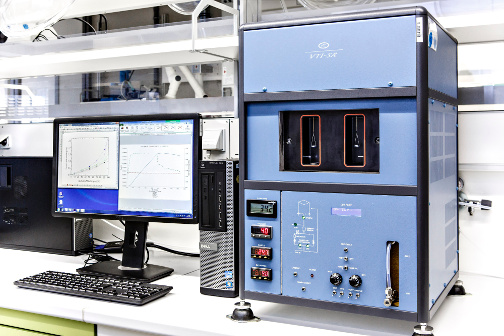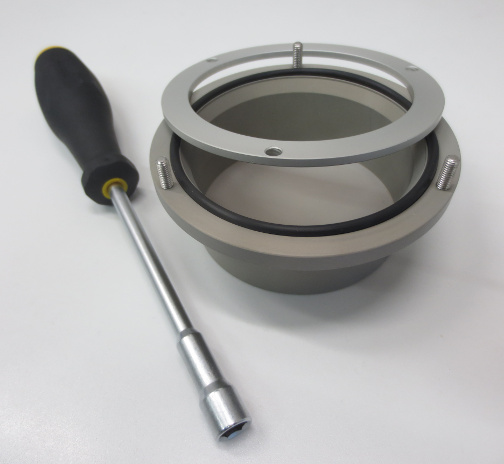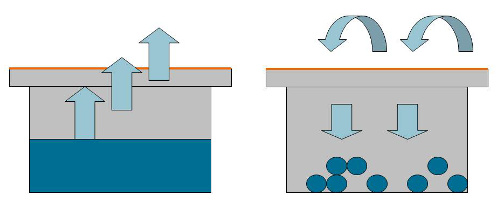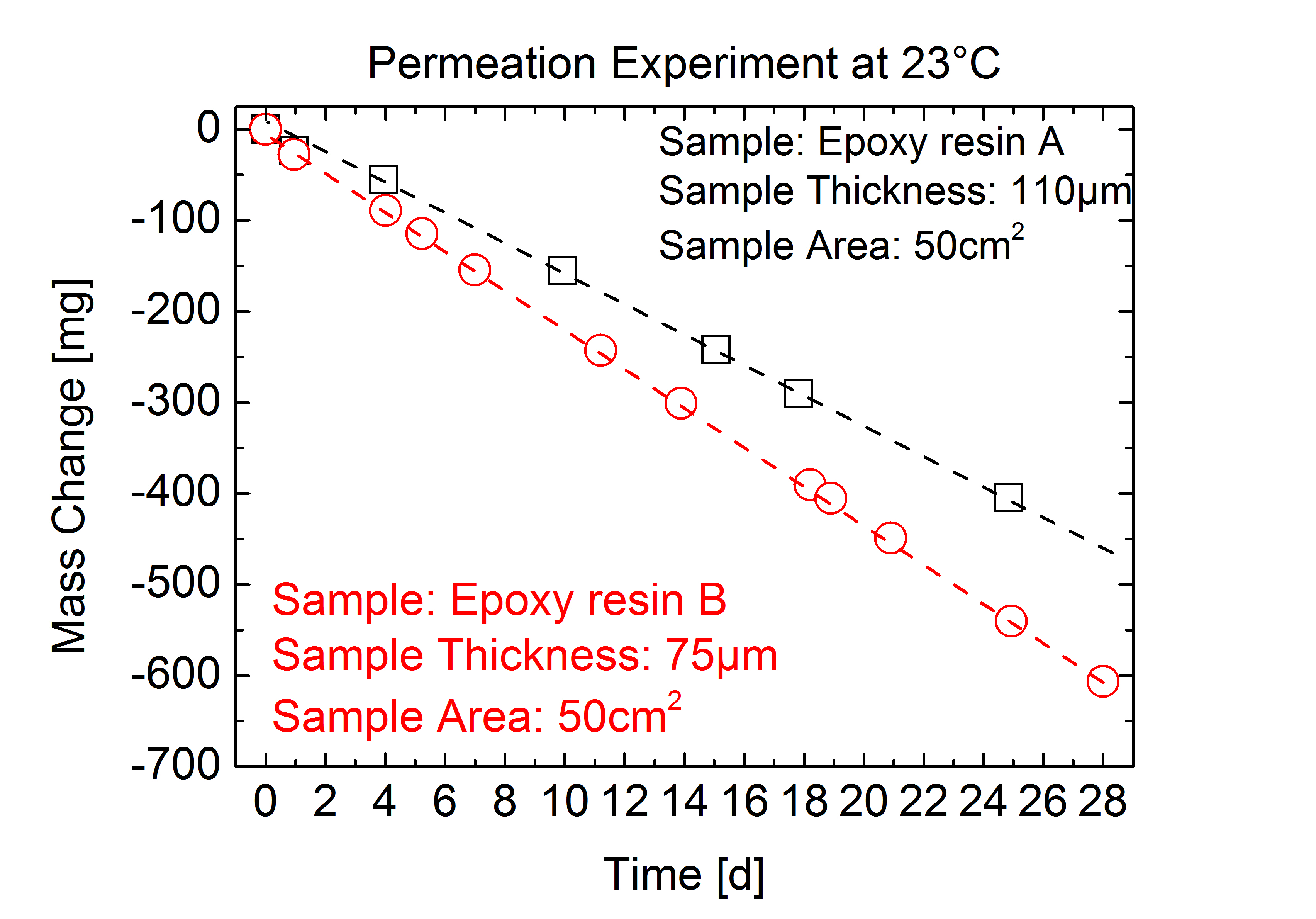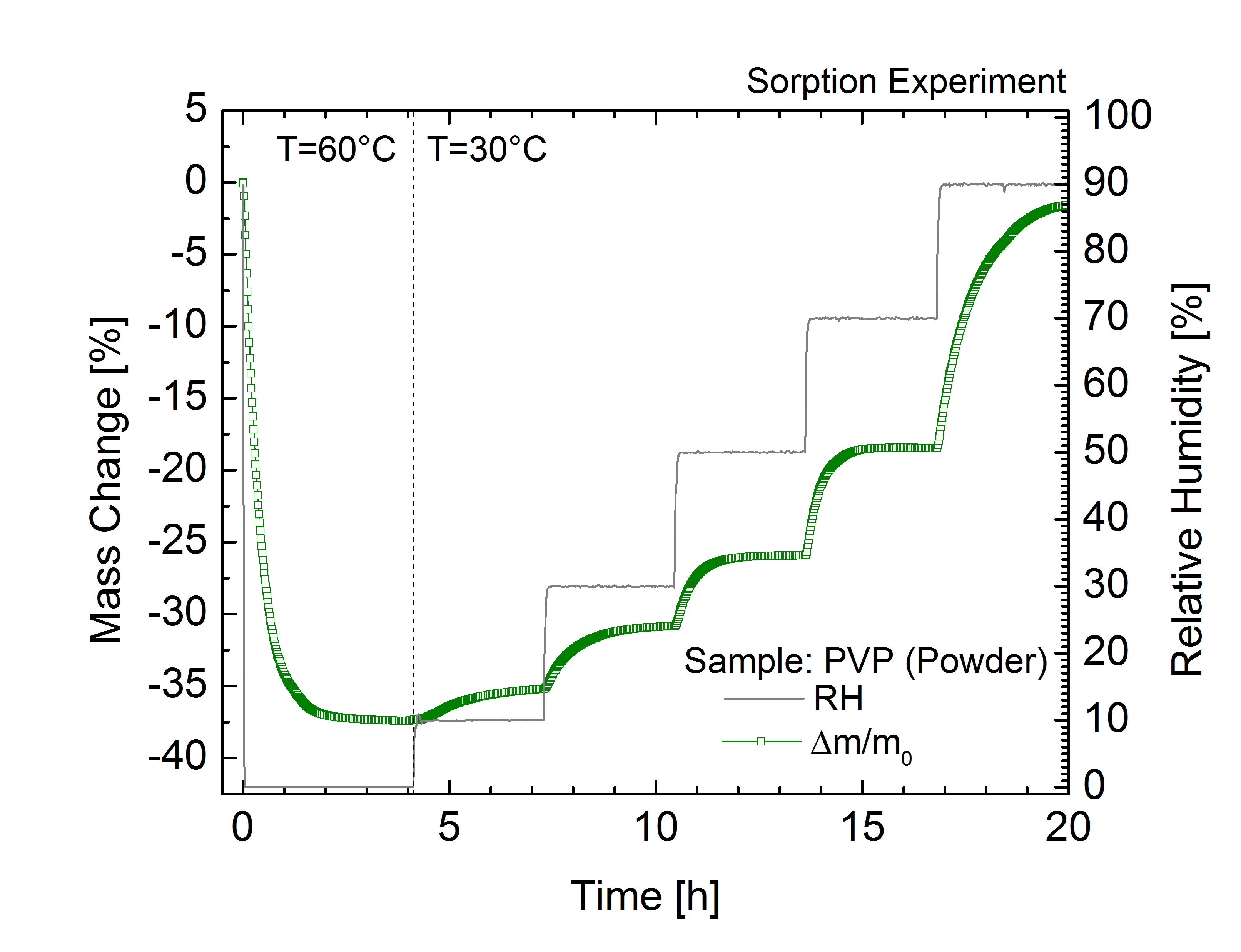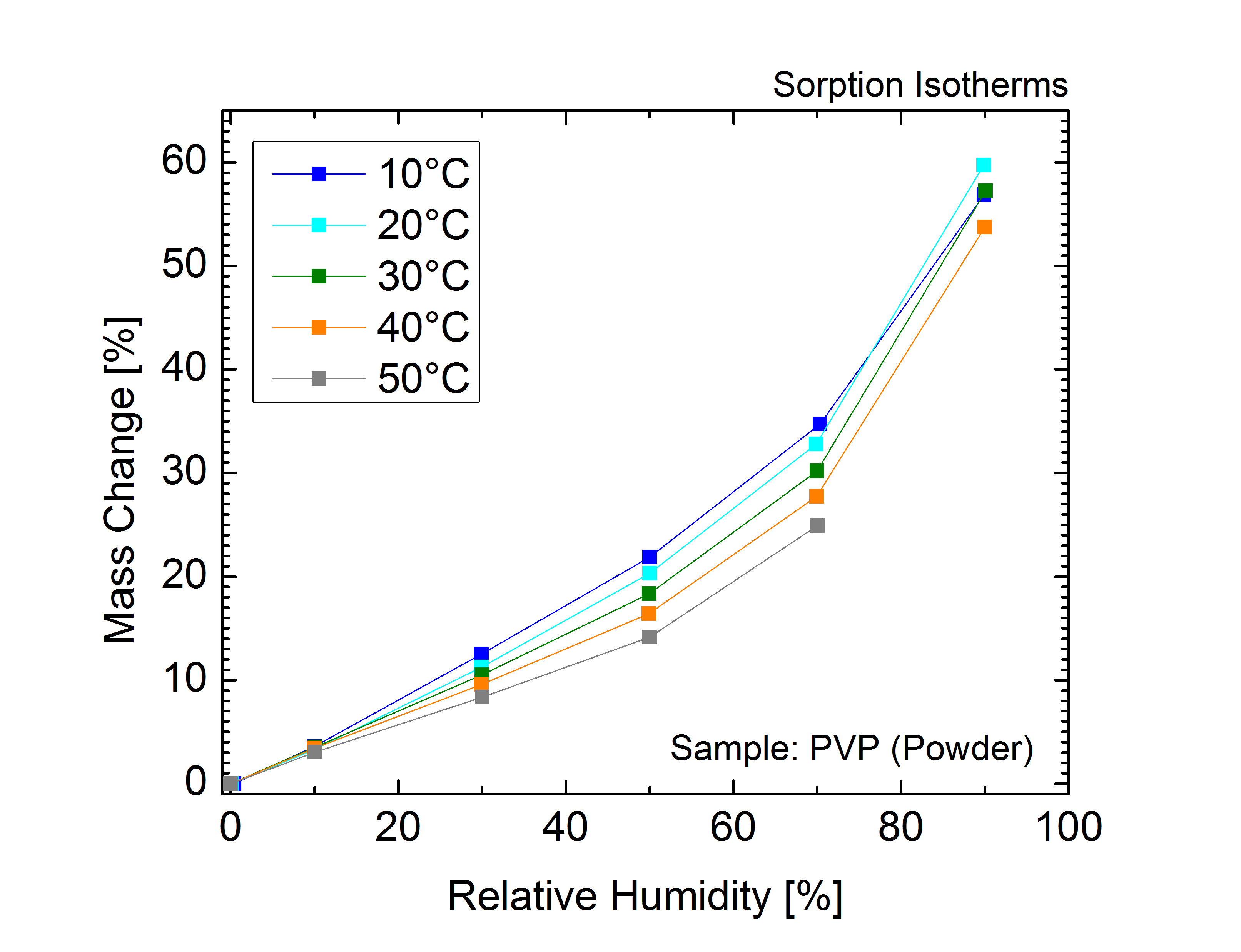Small amounts of water or organic substances can act as softening agents in plastics and cause long-lasting changes in the structure of the material. To record moisture absorption and sorption of organic substances in polymers, sorption and permeation measurements are available. Sorption isotherms, permeation rates and diffusion coefficients can be determined at different levels of humidity, temperature and also in vapors of organic solvents.
The knowledge of sorption properties (e.g. swelling) and permeation as a material property assists the development of different products such as:
- Plastic parts for vehicle construction (e.g. the effects of fuels and oils)
- Composite materials for lightweight construction
- Varnishes, coatings and adhesives
- Plastics for construction (for example foils, geotextiles)
- Materials for solar cells or fuel cells
- Packaging for foods or pharmaceuticals
Among others, tests and validatons according to following standards are possible
- DIN EN ISO 7783
- ASTM E96
 Fraunhofer Institute for Structural Durability and System Reliability LBF
Fraunhofer Institute for Structural Durability and System Reliability LBF